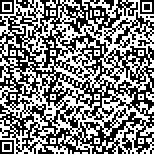|

二维码(扫一下试试看!) |
| Preparation of Wheat Straw Hydrogel and Its Adsorption Performance for Cu(Ⅱ) and Mn(Ⅱ) |
| Received:July 24, 2019 |
| DOI:10.11980/j.issn.0254-508X.2019.11.006 |
| Key Words:wheat straw hydrogel heavy metal ions adsorption properties |
| Fund Project:国家重点研发计划
2017YFB0307900
国家重点研发计划(2017YFB0307900)。 |
| Author Name | Affiliation | | LYU Xiaoping | State Key Lab of Pulp and Paper Engineering, South China University of Technology, Guangzhou, Guangdong Province,510640 | | WANG Yang | State Key Lab of Pulp and Paper Engineering, South China University of Technology, Guangzhou, Guangdong Province,510640 | | SUN Qianyu | State Key Lab of Pulp and Paper Engineering, South China University of Technology, Guangzhou, Guangdong Province,510640 | | SHENG Jie | State Key Lab of Pulp and Paper Engineering, South China University of Technology, Guangzhou, Guangdong Province,510640 | | YANG Rendang | State Key Lab of Pulp and Paper Engineering, South China University of Technology, Guangzhou, Guangdong Province,510640 |
|
| Hits: 4794 |
| Download times: 3134 |
| Abstract:Wheat straw hydrogel with high adsorption capacity for Cu(II) and Mn(II) was prepared by using wheat straw as raw material via free radical graft copolymerization. In the experiment, the wheat straw was first pulverized into powder and ultrasonically purified with sodium hydroxide solution. Then, the wheat straw hydrogel was obtained by graft copolymerization using ammonium persulfate as an initiator, acrylic acid and acrylamide as monomers, and N,N-methylenebisacryloyl as a crosslinking agent. The hydrogels were characterized by fourier transform infrared spectroscopy (FT-IR), scanning electron microscopy (SEM) and thermogravimetry (TGA), and its adsorption properties for heavy metal ions such as Cu(II) and Mn(II) were studied. The results of FT-IR and SEM analysis confirmed the wheat straw hydrogel had been successfully prepared. Wheat straw hydrogel had good adsorption properties for Cu(II) and Mn(II), and the adsorption process conformed to the quasi-secondary kinetic model. When the ion concentrations were 500 mg/L and 400 mg/L and shaking adsorption time was 6 h, the ion adsorption amounts reached 238.1 mg/g and 176.9 mg/g, respectively. |
| View Full Text HTML View/Add Comment Download reader |
|
|
|